How World of Warcraft Was Made: The Definitive Inside Story of Nearly 20 Years of Development
The developers behind World of Warcraft tell the story of its history, from the original beta to today.
This article first appeared on USgamer, a partner publication of VG247. Some content, such as this article, has been migrated to VG247 for posterity after USgamer's closure - but it has not been edited or further vetted by the VG247 team.
For 14 years, World of Warcraft has remained not only active, but relevant. It didn't define the massively-multiplayer online role-playing game (MMORPG) genre, but continues to evolve with it. World of Warcraft has sold millions of copies, made billions of dollars, and won hundreds of awards. With the release of its seventh expansion, Battle for Azeroth, WoW still boasts a thriving fanbase.
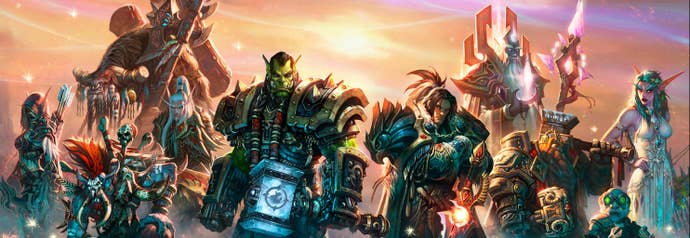
From the beginning, World of Warcraft was designed as a response to other games, with players of successful MMOs wondering if the experience could be made better. On the backs of titles like Ultima Online and Everquest, the team at Blizzard Entertainment transported players to the world established in Warcraft 3: Reign of Chaos, Azeroth. Those players could explore a vast world full of heroes, villains, gods, and monsters, combined with an experience that was far more player-friendly than its contemporaries. I played those early MMOs myself; I remember the anarchy and player-killing (Corp Por, anyone?) of Ultima Online, or the mob trains, corpse runs, and vicious grind of Everquest. In comparison, World of Warcraft was a breath of fresh air.
Game development is hard. Games fail all the time, sometimes because they're broken and other times because they simply don't find the right audience. Launching a successful game is difficult, and keeping a game successful for more than a decade is a combination of craft, passion, and luck. That's clearly evident, due to the litter of defunct competitors World of Warcraft has left in its wake. Over these past 14 years, World of Warcraft has benefited from its developers designing around player perception or learning to talk more with the community.
We spoke with just a fraction of the folks that have been behind Blizzard's decade-plus hit. Current World of Warcraft principals like Battle for Azeroth game director Ion Hazzikostas, principal artist Jimmy Lo, and technical director Patrick Dawson are joined by former Blizzard Entertainment chief creative officer Rob Pardo (lead designer of World of Warcraft and The Burning Crusade) and former lead systems designer Greg Street (World of Warcraft: Wrath of the Lich King, Cataclysm, Mists of Pandaria). Together, they help provide some structure to the story of World of Warcraft's early and continuing development.

Pre-Release: 1998-2004
While the in-game story of World of Warcraft springs from characters and storylines established in Warcraft 3: Reign of Chaos, many don't realize that the games shared a development timeline. Warcraft 3 was officially announced by Blizzard Entertainment at the European Computer Trade Show in September 1999, launching in July 2002. World of Warcraft was actually revealed at the same show in 2001, launching in November 2004.
They didn't just share development time at Blizzard's offices. They also shared some staff, like lead designer Rob Pardo, who worked on both projects.

"There's a time period that happened after Starcraft, where we kind of split the teams down south into two separate teams," explains Pardo. "One of them was working on a project that would eventually become Warcraft 3, but it wasn't obvious at the beginning that that was exactly the way it was going to go. The other team was working on a totally different project which didn't come to fruition and we decided to stop development on it. What was that team to work on next? That's where the genesis of World of Warcraft came from."
Members of the Blizzard Entertainment crew were already avid MMO fans, as 1997's Ultima Online and 1999's Everquest were fairly popular when it came to PC players. It was decided that the team of the defunct project would be moved to Blizzard's own shot at an MMO. The concept was championed by Allen Adham, hailed by fellow Blizzard Entertainment co-founders Mike Morhaime and Frank Pearce as "the genesis of Blizzard." Adham would take charge on the team that would develop the game that would eventually be known as World of Warcraft.

"I was the lead designer on [the Warcraft 3 team]. Allen took the role of lead designer on [the World of Warcraft team] and was really driving the design of that project through the early days," says Pardo. "We had a really interesting relationship because we didn't have a lot of other lead-level designers in the studio, so we spent a lot of time together co-designing a lot of things. During the early period, we focused a lot on Warcraft 3 design decisions, we'd have lunch everyday and talk about that. As WoW was getting deeper and deeper, our discussions turned more and more to WoW."
Many of the early concepts and mechanics of World of Warcraft were drawn from the games that preceded it, like Everquest. The team was engaging with Everquest as fans, but also as game designers, wondering where the experience could be tweaked and improved. Everquest's death system forced players to trek back to their corpses, many times without weapons, to pick up their armor and items; meanwhile World of Warcraft implemented a different system where you were an invincible ghost and could pay a penalty to simply be resurrected at any graveyard. Everquest enemies would follow you until you reached a zone barrier, while WoW mobs were tethered to their starting location and would snap back if they got too far away.
Pardo was experiencing the community that formed at the higher levels of Everquest play; he was even running a rather large guild in Everquest while working on Warcraft 3 and World of Warcraft. He wanted to capture that feeling of community and camaraderie, but with a stronger sense of purpose—something that was missing in the rather open-ended Everquest.

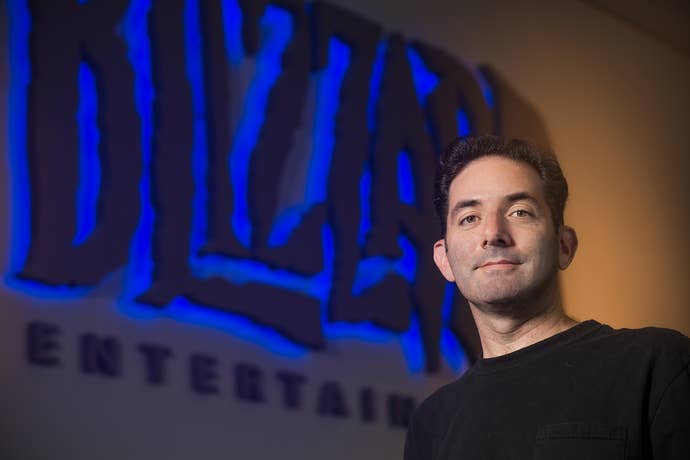
The World of Warcraft team's idea were quests. Players would enter a zone, find the zone's quests, and these would act as training wheels and give you an idea of what you're supposed to be doing. At some point, your quest log would empty out and WoW would become more freeform, like Everquest.
"That was our on-paper design. But pretty early on, once we were doing team play tests, what we learned was the moment that you ran out of quests in your quest log, the game just felt broken and people didn't know what to do," says Pardo. "It was definitely this big moment where the team was like, 'Uh oh, I guess we have to do ten times as many quests as we thought we were going to do.' But I think it's one of those great moments that happen in game development, where once you find the nuggets that are really fun, you double down on it."
More quests meant that the WoW team needed to get bigger to compensate. So the team stocked up on new hires for quest designers. According to Pardo, one these new hires was associate game designer Jeff Kaplan, who you may also know as the game director for World of Warcraft: Wrath of the Lich King and a small game called Overwatch.
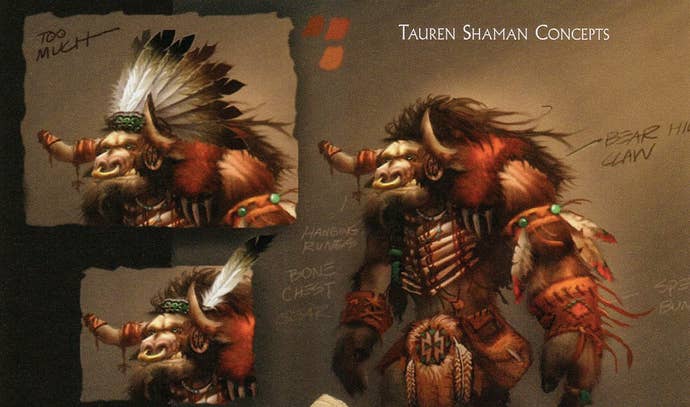
As World of Warcraft began to take a firmer shape, Pardo moved into a role designing the game's distinct launch classes: Warrior, Hunter, Rogue, Mage, Priest, Druid, and Warlock. The final two classes were separated between the game's warring factions, with the Horde having access to the Shaman, and the Alliance calling upon the services of the Paladin. The challenge was while the classes of World of Warcraft were rooted in the lore of Warcraft 3, most of the abilities had to be made up or pulled from other character types.
"In Warcraft 3, even our heroes only had four abilities. In World of Warcraft we were going to be making these classes with 30, 40 abilities. So we couldn't take a Mage, who might be inspired a lot by the Archmage of Warcraft 3, take their skillset and say, 'Okay, well now we've got an RPG class.' It just doesn't work like that," says Pardo. "A lot of times what we'd do is take spells and abilities from multiple heroes within Warcraft 3 and merge them into a singular class. A really good example of that is the Shaman in World of Warcraft, where we put the totem concept. But if you look at Warcraft 3, [totems] are a Witch Doctor concept and kind of a Troll thing.
"The Horde/Alliance split was another thing that was a bit of a challenge for us because if you look at the real-time strategy (RTS) games, there's a hard split between armies. We had to have some world rationalization for why there were Druids on both sides. So we had the idea where Night Elves could be Druids, but even there we stretched it so that female characters could also be Druids. And then we brought [Tauren Druids] in on the Horde side, which was not necessarily in the lore up to this point."

Pardo also spearheaded a system that was meant to prevent players from burning themselves out on the game. Blizzard was doing pre-release testing and the team noticed that some players would play for far longer than intended. Some players never logged off, with multiple people talking turns on a single characters. Blizzard didn't want an endless treadmill, so Pardo came up with a plan.
"We felt like, 'Okay, that that's not great behavior.' And there's a certain amount of wanting to save people from themselves," he says.
The idea was rested experience. When you logged into the game, you gained full experience for a set period of time. After leveling for a bit, you'd eventually drop down to gaining half of the experience that you'd normally gain. Players absolutely hated it. So Pardo flipped it around. The early, enhanced leveling was framed as the player gaining bonus experience, while the non-rested state was framed as normal, making players were much happier.
"From a purely numerical standpoint, it didn't really affect how fast you were leveling, but it had a huge psychological effect on how people thought about the system," says Pardo. "As a game designer it was a great learning experience for me and I made it actually one of the game design values of the studio: Make it a bonus. Whenever you're trying to prevent players from doing something in your game, ask the question 'Is there a way to create a bonus to do the opposite behavior?'"
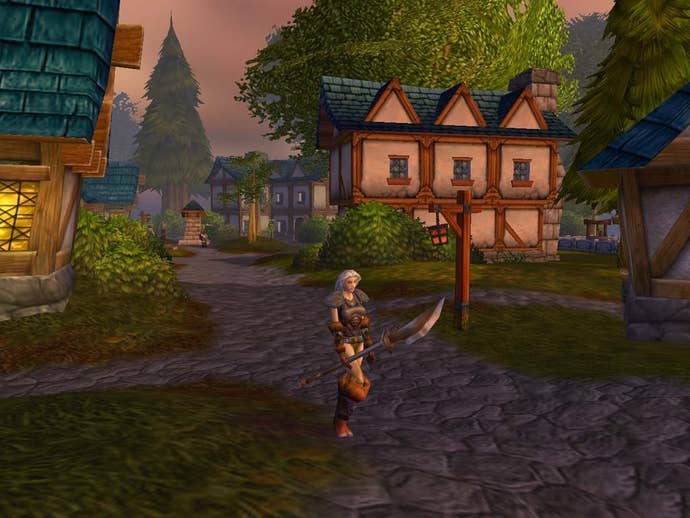
Before WoW could cross the finish line, it was hit by a major change. Allen Adham was instrumental in getting World of Warcraft off the ground and driving the core of the game into life, but as 2003 wore on, development of the game wore him out. Adham left the industry entirely, only returning to game development and Blizzard Entertainment over a decade later in November of 2016. Pardo filled Adham's shoes and helped push the game to a shippable state.
Around the same time as Adham's departure, the World of Warcraft team saw the addition of a developer who would go on to become a veteran at the studio. Concept artist Jimmy Lo joined Blizzard to help craft the visual style of World of Warcraft.

"I think from an early, early stage, we wanted to create a style that was different. At the time, a lot of MMOs had a more realistic style, so we knew that, 'Okay, what can we do to separate World of Warcraft from everything else visually?' The roots are Warcraft, so we obviously looked at that for inspiration and we noticed there was a lot of bold colors and exaggerated shapes," says Lo.
The problem was that Blizzard was bringing in artists raised and trained on the trending art style in games. Modellers used realistic proportions and artists used realistic textures. The team was having trouble cracking the look of Warcraft in the new viewpoint. The art team was experimenting with hand-painting textures for a more animated look, but they didn't know how it would look in-game. So they put together a single building and tested it out.
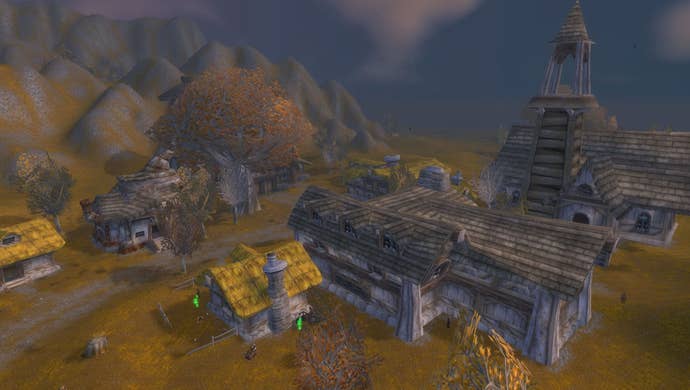
"There was just a lot of doubt until we actually made a building in Westfall that was super-stylized and we used all hand-painted textures. Even the terrain was more hand-painted textures," Lo tells me. "When we first saw the human farm building in Westfall, that was the first time where I was like, 'Wow, I think we got something here.' It was also cool because it had a handcrafted feel to it because we were painting everything; we weren't photobashing and using photo textures. It went with the word 'Warcraft.' It had the 'craft' in it. It's kind of a cool, happy accident that came to be."
The development of World of Warcraft is littered with these happy accidents. Experiments that bear fruit, wild ideas hammered into shippable shape; technology made for one purpose being used for another. The visual design of World of Warcraft was drawn from sketches and teases of regions in Warcraft 3, but the art team had leeway to make its own mark on it. Blizzard's standard operating procedure involves coming up with something interesting (or taking an interesting idea from someone else's game) and then iterating that repeatedly into a polished final design. In one example, Lo relates the original concept for the Forsaken home of the Undercity.
"One of the initial ideas was this farmland that's all blighted out, which sounded cool, but some of the artists were like, 'I think we can make it more epic.' There was a whole bunch of back and forth discussions and pitches. 'Okay, what if it was underground?' That was a radically different idea than what was originally thought up, but we were able to sell it to our directors. They were on board with it after seeing the images," says Lo.

World of Warcraft: November 23, 2004
After months of hype and beta testing, Blizzard Entertainment finally released World of Warcraft on November 23, 2004 in North America and Australia. The European release would come in February 2005. Fans were happy, reviews were great, awards were given, and sales were strong. Obviously the team behind the game were elated, right?
Well, not really. See, Blizzard Entertainment has shipped games before, like Warcraft 3, Starcraft, and Diablo. The difference between those games and World of Warcraft is they were done once shipped. Sure, Blizzard would offer patches and the occasional expansion, but the team had the ability to take a breather. All the WoW team had was panic.

"We'd vastly underestimated not only the popularity as far as how many games we were going to sell, but also I think vastly underestimated how much time people were going to be spending in any given day playing it. And we just weren't prepared. On a lot of fronts," admits Pardo, mirroring the iconic phrase of Burning Crusade villain Illidan Stormrage.
"From a pure hardware side, we weren't prepared. From the standpoint of how fast people were getting to max level and are we going to have content in place for them; we weren't prepared. We never really experienced what it's like to be on a game that never ever ends," adds Pardo. "In a lot of ways everything starts the moment you launch, which none of us were really mentally or emotionally ready for the difference, because again a lot of us had shipped games and you go through that final moment where you launch this thing and it's finally out there. Honestly, the first two years of post-WoW development was really this perpetual state of 'Can we just catch up to the popularity of the game?'"
While most of the team was making sure that the game worked, one sub-section was making sure that players had something to do. This was the raid team, who were tasked with making the encounters for the current endgame. Since so much effort was being put on shipping the game itself, the elder game of World of Warcraft didn't have as many resources.
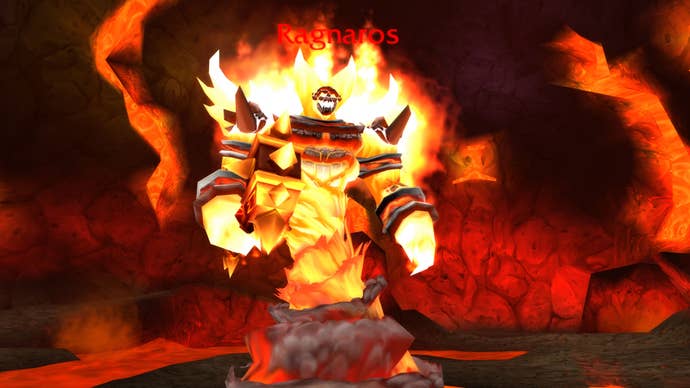
"All the kudos to the sub team that was really involved in creating [the raids], because we really didn't have time to do a really detailed elder game at that time," says Pardo. "Originally, we thought we would only have time to complete one raid, Onyxia. Molten Core wasn't even on the schedule.
"They came up with the idea of Molten Core, which is based around a lot of content and art that we already had. They figured out a way to do a full-blown raid dungeon just using or mashing up stuff that we already had. Obviously it's very much a version 1.0 of WoW raid game, but back then we were definitely learning what a WoW raid looks like. It was very experimental because we didn't have the ability to put it into the beta, because it was coming in hot. So really, I almost look at our early raids like beta versions of what eventually raids turned into."
The raid team was instrumental in keeping World of Warcraft alive. Onyxia's Lair and Molten Core were 40-player raids available at launch, with Molten Core's Ragnaros acting as the defacto final boss of World of Warcraft at the time. The team would follow those opening salvos with the 40-player Blackwing Lair, 20-player Zul'Gurub, and the 40-player Naxxramas. Blizzard even offered a massive event with the opening of the Gates of Ahn'Qiraj in the deserts of Silithus. This would lead to the outdoor 20-man raid The Ruins of Ahn'Qiraj and the instanced 40-man Temple of Ahn'Qiraj.
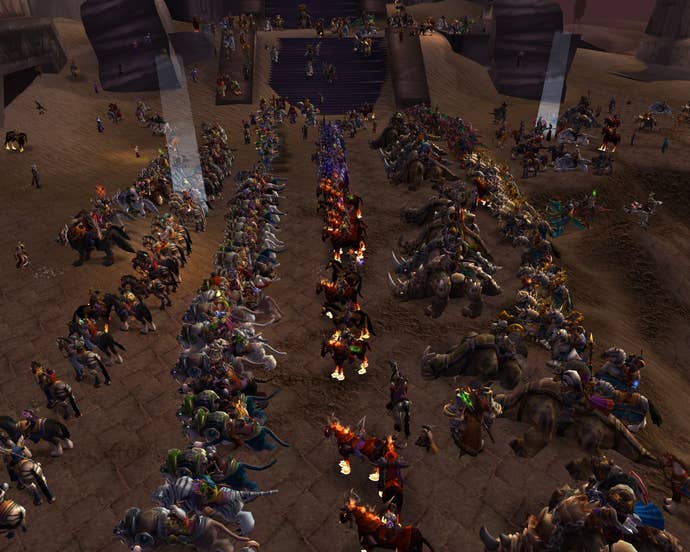

Of course, the event didn't go as smoothly as planned. Current World of Warcraft technical director Patrick Dawson joined in December of 2005, right before the release of Patch 1.9 and the Gates of Ahn'Qiraj. At the time, Dawson was on the server team, tasked with making sure the servers stayed stable. And when the Gates opened, things started to fracture. Everyone on each server was there to watch the Gates open, but the game wasn't built to have every player in one zone.
"I think the WoW development team maybe wasn't as well-oiled of a machine back then, because it actually came as a surprise to the engineering staff that we decided to funnel the entire population of World of Warcraft into a single area. Everybody was waiting for that moment all in the same area," recalls Dawson. "We're sitting here teleporting out level 30 characters—'You've have no business being here and you're just killing your server!'—and we're doing this by hand just trying to make it."
Despite the hectic day, Dawson remembers it as a fond moment in World of Warcraft's history. "It was spectacular. That moment cannot be reconstructed; even in the moment I knew how special that was. This is going to be something that goes down in the history of World of Warcraft as just one of the most memorable events and I got to be there on the inside just trying to keep the ship afloat while this intense event was occurring," he says.
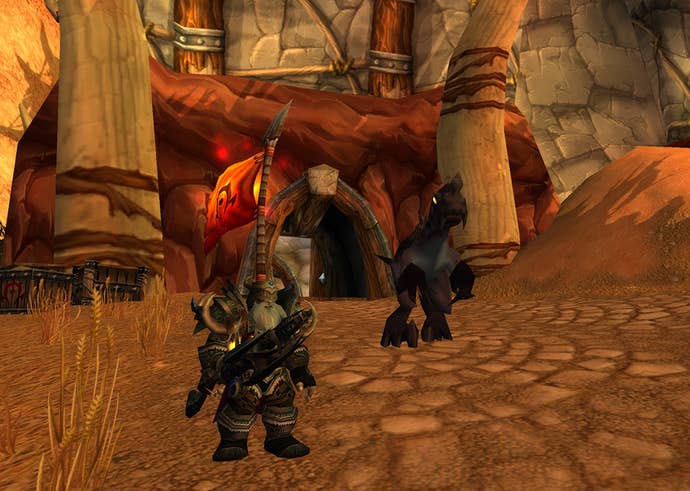
The latter part of "Vanilla World of Warcraft," as some would eventually call it, saw the first iteration of technology that would trickle down into the rest of the game later. Player-versus-player Battlegrounds were beefed up with cross-server Battlegrounds. If you were on a low-population server, or one where one side vastly outweighed the other, you were no longer without any recourse.
"How do we make something cross-server?" Dawson asks. "So our lead server engineer at the time, Joe Rumsey, shut his door for three months and said, 'I'm going to make this a thing.' He went and wrote the tech we needed for that. Mostly, it was how do we communicate with the database efficiently. Battlegrounds proved to be pretty successful; we didn't really have too many problems with that. There is the normal live ops issues that you would have, but overall that was a success."

The Burning Crusade: January 16, 2007
The World of Warcraft team had weathered the storm, but they weren't out of the woods yet. (Spoiler: They never truly get out of the woods. They live in the woods and make homes there.) With the core game successful, it was time for the team to define what an expansion set would look like. Everquest had set the tone with two expansions nearly every year leading up to World of Warcraft's launch. Blizzard had to answer.
"We had enough developers to get WoW out the door, but do we really have enough developers to support WoW? To do content updates for WoW and make an expansion all at the same time? The answer was definitely 'No,'" says Pardo.
And yet, World of Warcraft's first expansion The Burning Crusade was announced on October 28, 2005. The expansion put players up against the Burning Legion and the righteous anger of Illidan Stormrage. It also added a host of new features to the World of Warcraft experience. After struggling at the beginning of World of Warcraft to handle the endgame, Burning Crusade ensured that the elder game was a focus. The expansion would eventually have eight total raid dungeons before being brought to a close, including impressive outings like Tempest Keep, the Black Temple, and Sunwell Plateau.
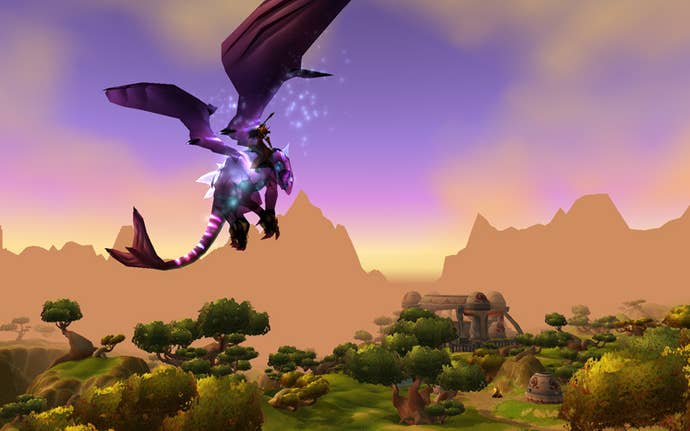
The biggest addition though were the Flying Mounts. They were later introduced in the leveling process, but once obtained, a player could fly high about the shattered ruins of Outland, the former home of the Orcs. It was a whole new world for players-and for the art team. The original world of Azeroth wasn't designed to be seen from above; there were a number of empty facades that only looked good from certain angles. Flying meant a whole new way of thinking about environment design.
"At first we were all like, 'Oh man, that's cool,' says Jimmy Lo, "but then as we started prototype zones, concepting it, and actually thinking about each individual area, it started to dawn on us. We actually had to think about zone transitions in a different way compared to Vanilla, where there were a lot of areas you couldn't access. So we didn't have to think about blending between two particular zones, because either they can't get there or they'll never see it.
"That really changed the way we kind of approached our zones even just design-wise. Traditionally, we would create a concept of how a particular zone looks. And then right next to that zone, we'll just do another concept; this time we had to actually put a lot more thought into how we transition."
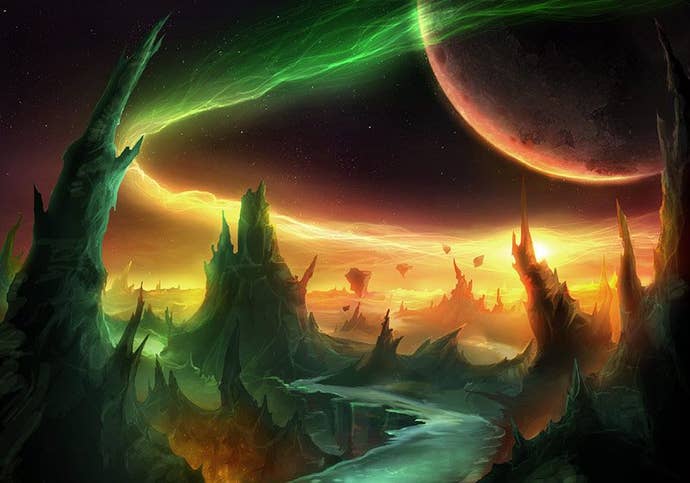
The composition of Outland zones wasn't just different, it was bigger too. Mounts flew fast, so the zones were larger to compensate, and artists had more space to fill. This meant a zone like Zangarmarsh can't be all water, mushrooms, and a single color; the team had to play around with more biomes. Looking down on the world from above also forced the team to think more about distinct points of interest. They had to be things you could see, even when the draw distance was low.
There was some freedom to Outland though. It had only really been hinted at in previous Warcraft lore, so the World of Warcraft art team was free to create what it could dream up. And they could dream big, so Outland became the shattered shell of a world: Huge layers of the world's crust, floating in a multi-colored sky.
"A lot of it actually came down to some artists who started to blue sky what Outland can be based on some descriptions," Lo tells me. "There was this one painting that was done where it showed Outland with the continents torn and ripped apart. When we all saw that image, we were like, 'Oh yeah, that's it.' We never thought about it that way until we saw that concept and it kind of just started from there. There weren't any talks of creating zones that were torn apart until that that concept piece. Everybody was on board. It was cool because it was a totally fresh experience that was different from Vanilla."
Another change was the addition of two new races. The Horde saw the Blood Elves join their ranks, while the Alliance welcomed the Draenei into the fold. Each race broke a rule of the original World of Warcraft, bringing Paladins and Shaman to the other side for the first time. The personal war of the Horde and Alliance had spread to the players, and part of that badge of honor was the unique class. Blizzard was reticent to break that.
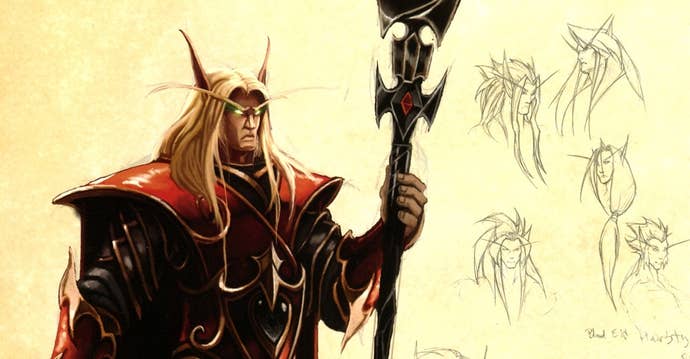
"Yeah, that was that was a tough one for us. The Horde/Alliance split has a bit of a long history on it. Once we were in full swing and we were live, it was such a meaningful part of the game. I think the emotional resonance of the game is you know Blue and Red," says Pardo, referring the colors of the Alliance and Horde banners. "We really wanted to protect that because it was such a cool part of making you feel like you belong to the side."
The problem was the Paladin and Shaman classes were very different, the encounters the Alliance and Horde were forced to tackle were the same. Especially when it came to raids, where raid designers had to plan for the squad composition having either a Paladin or a Shaman. One attempt to fix this was to provide some sort of ability parity between the two unique classes, but this only watered down their unique feel.
"We woke up one day, especially me and [World of Warcraft designer Tom Chilton], and we'd be like, 'Wow, the Shaman's starting to look a lot like the Paladin.' It went right up against a different design pillar. We really wanted each class to feel really unique and different from one other," Pardo says. Something had to break, and what broke was the unique faction classes.


In an effort to make the game more streamlined and player-friendly, Blizzard introduced the Looking for Group tool in Burning Crusade. In Vanilla or Classic World of Warcraft, players had to talk in a unique Looking for Group chat channel to find other player looking to run the same dungeon. Once you found a full party, which could take anywhere from minutes to hours, then you had to summon the entire party. This involved a lot of walking, riding, flying, and teleporting.
The Looking for Group tool was an attempt at a push-button fix for the problem. The idea was to make it dead simple to group up and run an instance.
"If you truly want to get back to the genesis of Dungeon Finder, it probably goes all the way back to Warcraft 3. When we moved from Starcraft to Warcraft 3, one of the big innovations that we did in Warcraft 3 was add automated matchmaking," says Pardo. "I was certainly always passionate about the idea of could we just take the Warcraft 3 methodology? Can we get it down to a single button; you press a button and you're instantly magically in a group that's well-formed."
The system somewhat worked, allowing players to instantly team up with like-minded individuals to run dungeons. Sure you still had to wait in some cases, like finding a good healer or tank, but the wait time was shorter. There were two drawbacks though: one immediate and one in future expansions. The immediate issue was instances became way more popular, which required changes behind the scenes.
"The way we would run our realms back then was everything that happened to a player on a realm was done on the hardware for that realm. So if you had a realm that was very highly populated, you had a certain number of [server blades] that were allocated to that and instances were run on those blades. You couldn't run it with your friend on the other server. What would happen is if we ran out of resources, you would get 'Transfer aborted. Instance not found' and that would happen on higher population realms pretty frequently," says technical director Patrick Dawson. "How do we add hardware, where do we add hardware, to what servers, and how does that work? Now that we've moved to more of a cloud-based mentality, that doesn't really happen anymore, but that was a challenge."
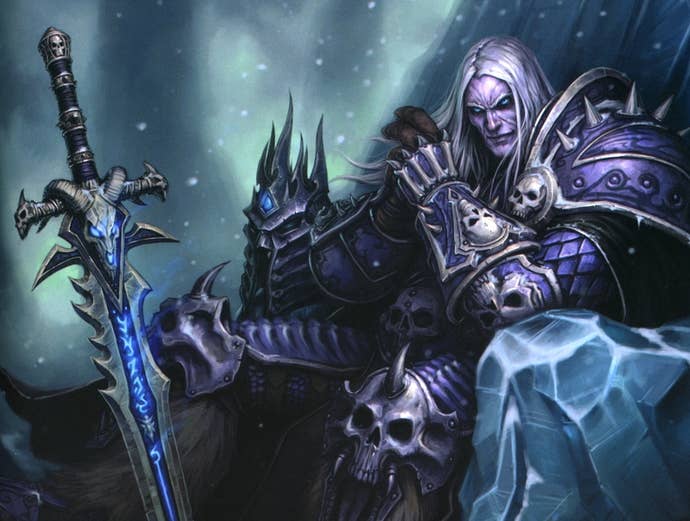
Wrath of the Lich King Pre-Release: 2007-2008
Overall, Burning Crusade was a success. It sold nearly 2.4 million copies in its first 24 hours and 3.5 million in its first month. World of Warcraft was well-established and more people were joining the team, many of whom were WoW players themselves. The first was systems designer Greg Street, known by many in the WoW community simply as Ghostcrawler. Street joined the team in February of 2008, leaving a previous designer position at Age of Empires developer Ensemble Studios.

"At the time, Ensemble had been acquired by Microsoft and Microsoft started to have a heavier and heavier hand in our development. And I started to get nervous that they were only going to want to make Age of Empires sequels forever, so I kind of cold-called Rob Pardo," says Street. "I just said, 'Look, I've been a lead designer for four or five years. I've been making games for about ten years. Do you have anything on WoW for me?' The timing just couldn't have been better, because [Jeff] Kaplan was already talking about rolling off of WoW to go on to what was at the time Titan, and Tom Chilton was going to backfill him leaving a hole for a class system designer and I thought that was something I could do. I knew the game well enough and had the experience to it and they really had the need. So, it happened pretty quickly."
Street was handed projects dealing with Hunter pet talents and figuring out how to actually implement the game's first new class, the Death Knight. Blizzard showed off the class at BlizzCon 2007, but it wasn't actually a completed design. According to Street, when he came onto the project the class only had three moves in its repertoire: the core abilities of Plague Strike, Blood Strike, and Death Strike. Street only had a working understanding of World of Warcraft, Death Knight lore, and a veteran team of class designers. "I designed the talent trees almost on paper without really knowing what was easy or hard to do," he tells me.
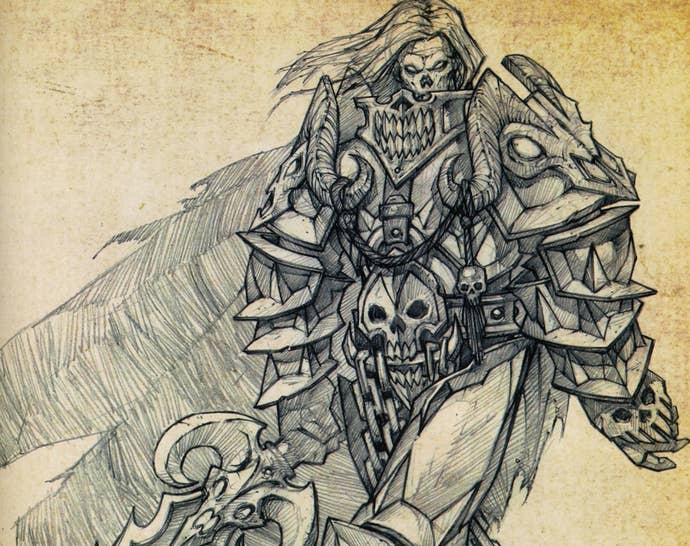
"[My team] were veterans, particularly the class designers like Kevin Jordan, Kris Zierhut, and Chris Kaleiki. Kevin had been there forever, I think from the very beginning of World of Warcraft. They knew how to build anything in the tool. They had a pretty good idea of what would work and what didn't. So I would pitch some ideas and they'd be like, 'You know, we tried that and had these problems.' This is probably not the best way to develop I think in retrospect. Having a little more understanding of what the game engine was capable of and what would be buggy versus what would be easy to build would have saved us a ton of time," says Street.
A few months later, the World of Warcraft team would get another new transplant, a game designer by the name of Ion Hazzikostas, who joined to implement encounters. For WoW fans, that name is rather familiar these days. Hazzikostas is the current game director of World of Warcraft, leading the development of this year's expansion Battle for Azeroth.
"One of my first tasks as an implementer was actually doing most of spawning for the interior of the Battle for Undercity event. That was the culmination of the Wrathgate. We needed to fill the entire Undercity with fire, marauding undead, and enemies," Hazzikostas explains. "I had just learned how to use the spawn tools a few days prior. So it was really just hitting the ground running.

"And one of the most amazing things about working on World of Warcraft is how tight the iteration cycle is between what we do and the public's experience. I got to Blizzard, learned the tools over the first few days. One week later, I was putting stuff into our beta builds that then I could see discussed on fansites literally three days later. It blew my mind. That's the first time it felt real to me. And it's just been an awesome trip ever since."
But as these two new designers were coming onto World of Warcraft, one veteran was rising into more executive-level work at the studio. When Allen Adham left Blizzard, Rob Pardo had become the vice president of game design at Blizzard, tasked with overseeing several projects. When Wrath of the Lich King began development, Blizzard finally had enough lead designers that Pardo could move further into management and away from design. The brunt of day-to-day development for Wrath of the Lich King fell to game director Jeff Kaplan and lead designer Tom Chilton. Kaplan's title on Wrath of the Lich King was new in the company, though it was really just a new classification of the work lead designers were already doing within Blizzard.
"It was really during Lich King that I was transitioning into more of a design guidance sort of role rather than day-to-day. Lich King really shipped under Jeff Kaplan as game director and that was first time we ever used that title in the company," says Pardo. "In the Lich King, you're starting to look at modern day WoW development. Everything before then I think was catch up, catch up, figure out how this works, learn, learn, learn."
Another step that illustrated the beginnings of modern day Blizzard was Street's willingness to speak directly to players. Prior to his time on the team, the World of Warcraft developers were very quiet, with players just talking to the community team. But Street wanted to build a connection.
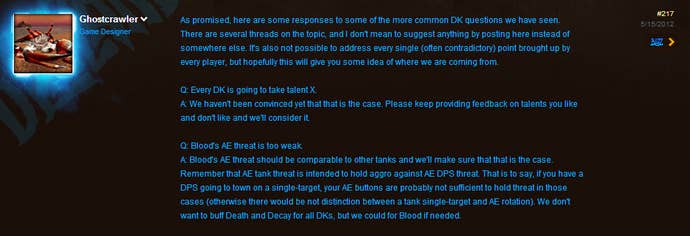
"At the time, Blizzard had a very low-key community presence," Street tells me. "Chilton and Kaplan had forum accounts and then the community team did. At the time, it was like Eyonix, Drysc, and Nethaera. Chilton and Kaplan shared a corner office and I went in one day and I'm like, 'Hey, what do you guys think about me getting a Blue forum account?' And they kind of looked at each other and Kaplan shrugged and was like, 'Yeah, let's try it.'"
Street became 'Ghostcrawler,' the mythic Blizzard developer that would talk to the community. The Community Managers for the game were great, but Ghostcrawler had the answers to your questions on hand and he was willing to answer them. It was something completely new to players.
"I think for a long time, Blizzard didn't know quite what to make of that," he said. "Never quite figured out if it came from like my bosses or came from the community team—there was a concern that it was making the community team's job harder, because now players didn't want to talk to them since they didn't have the answers. At some point Blizzard made the corporate decision that we're not going to have developers posting on the forums anymore, just Community members. And so I stopped at that point. Fortunately for me, Twitter became a thing around the same time, so I transitioned pretty smoothly from the Blizzard forum account to my own personal Twitter account and kept up the conversation."
Today, Blizzard has a very strong social media presence, talking to players on Twitch streams, YouTube videos, Reddit threads, and official forum posts. But back in the day, Ghostcrawler was an oasis to some players and an avatar to hate for others.
Wrath of the Lich King: November 13, 2008
After his disappearance at the end of Warcraft 3: The Frozen Throne, the formerly heroic Paladin and eponymous Lich King Arthas resurfaces in the icy wasteland of Icecrown, in the continent of Northrend. The expansion Wrath of the Lich King leaned hard on the culture and mythology of Scandinavia, with many allusions to Vikings and Old Norse myths. Players could tackle the ghosts and undead shades of the Vykrul or help the sea-faring Tuskarr in their fishing villages.
The Death Knight was introduced as a Hero class in this expansion, starting at level 55 instead of level 1. The concentrated design effort of the team went into making sure that the Death Knight was a success. It wasn't just the first new class, it was also a litmus test for future classes.
"One of the most requested features has almost always been new classes," says Pardo. "The class team really understood that if we add new classes, it's not just a feature for the new expansion. It's going to affect every system in the game. It will cause us to add class specific items, quests, [non-player characters], spells, and abilities. It will also make the game more complex to balance in [player-vs-player], raids, etc. Adding a new class was a massive feature with tons of potentially negative ramifications."
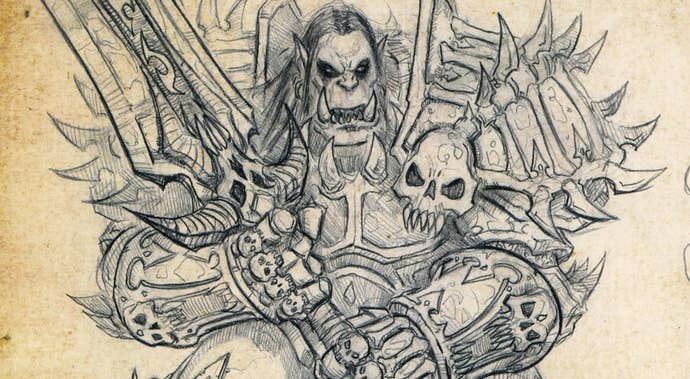
The Death Knight starting area featured a robust story that involved your fledging death knight pillaging a town called the Scarlet Enclave from the floating fortress of the Ebon Hold. As the death knight army pushes into the town, the world itself changes from a small base camp to an army foothold. Scarlet Armies defend against your attacks, only to be gone in the next quest. In term of storytelling, it allowed Blizzard to push forward the idea that the player's actions mattered.
The technology is called "phasing", replacing one version of in-game reality with another. According to Patrick Dawson, the technology is essentially all server trickery.
"Phasing is all visibility. Everything that you see, all of it exists at the same time in the same place. This actually is a big technical challenge, because you can have in one phase there be this tremendous war between the Alliance and the Horde and in another phase it's this peaceful, tranquil area because maybe the war is over," says Dawson. "If you make it go from one war to another war to another war you've now layered three phases worth of very expensive combat on top of each other; that could actually cause server issues. So we're actually really careful about that from a tactical aspect-how we did phasing-because it really was a client visibility issue. You wouldn't know what was happening in the other phases, but everything was still happening on the server in parallel."

Hazzikostas notes that while phasing is interesting technology in terms of storytelling it does have a few issues. Players in other phases can't interact, because they're technically on different instances. If you're on one part of a quest with phasing while I'm on another, we might as well be on different servers.
"We're always trying to find a line between robust single-player storytelling and a sense that your actions matter in the world. And there is a coherent narrative, that is the backbone of this world. But also the inherently MMO nature of the experience. We never want to stray too far away from these shared social multiplayer roots. Early on, there's a lot of widespread use of this new technology focused more on the power that gave us without fully understanding the downsides," he explains. "I think that's a story that has repeated itself with many new types of tech that we've gotten over the years: Run wild using it initially, learn its limitations, and then pull back to a more measured place."
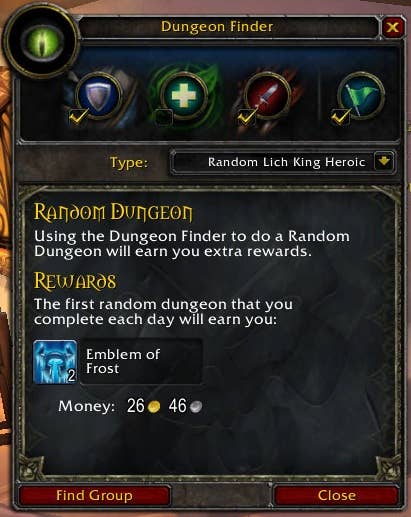
Blizzard offered a replacement for the rough Looking For Group feature from Burning Crusade during Wrath of the Lich King's patch cycle. In Patch 3.3.0, it was overhauled and renamed to the Dungeon Finder, which is what most players know it by today. Players could now set which of the three roles they could fill—Tank, Healer, Damage Dealer—when they queued up on the service. The focus was streamlined to just five-man dungeons and Blizzard introduced a rewards system that incentivized players to run at least one random dungeon a day. The Dungeon Finder also became cross-server, so queueing for a dungeon would connect you with players across your entire battlegroup, which was a rough collection of game servers.
For players, this seemed like a solid change, but not a major one. Behind-the-scenes for Blizzard though, this was a major shift in how the game's server had operated until now. The tech team had to rethink how player parties were created and shatter their existing operation procedures. Still, the team felt it was worth it in order to make things easier on its players.
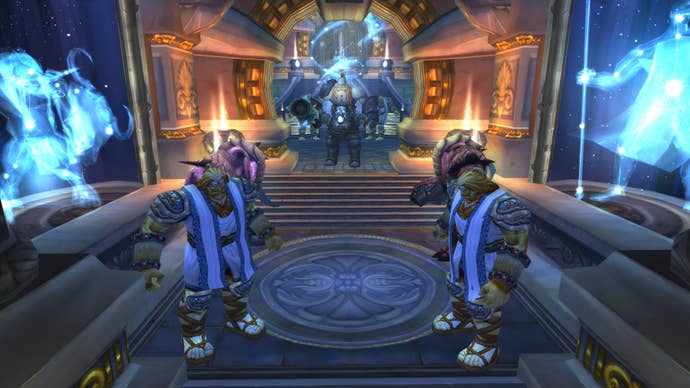
"Certain pieces of data were stored locally on the realm and we had to break that construct completely and put it in a more open area. For example, a party was stored originally on what we would call our world simulation process. That process itself had all the information about the party. Well, when you have people from multiple servers, you can't really do that. You need that party to live somewhere else," Dawson carefully explains to me. "So we had to actually split up a lot of our services and move the services into other processes that could run into a centralized location. And that was a monumental effort. That was crazy. It was it was a pretty big re-architecture of the system to actually spread the work out from making it on a single realm to more of a distributed model."
Another new addition and major quality-of-life change was the addition of Dual Talent Specialization, known in the community as "Dual Spec." Up until this point, each class was largely locked into a single talent specialization: a Mage could be either Arcane, Fire, or Frost, while a Warrior could be Arm, Fury, or Protection. Each specialization determined what your abilities and general focus was: the Protection Paladin was a tank, the Retribution Paladin focused on DPS, and the Holy Paladin brought healing to a party.
Up until Wrath, you could switch specializations, but it was a fairly intensive process. You would have to return to a city and pay a fee to reset all of your talents, then you would have to choose your new talents (known as "respec"), set all of your new abilities in their proper place on your action bar, and make sure you were wearing the correct gear. It was fairly tedious, something that wasn't lost among the most avid players on the team.
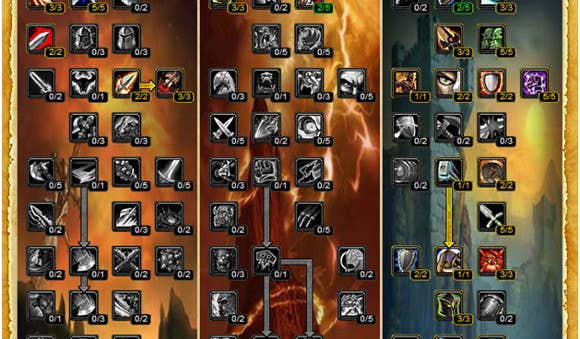
"Kaplan was leveling—I think he was playing a Warrior at the time. So you would have to quest as Arms and then he would switch to Protection to run dungeons, which is a huge pain. So he and I kind of were thinking about the idea of the dual spec, rather than being locked in," Street says. "I always had some misgivings about it. Rather than being a Protection Warrior with a shield, you were just kind of whatever you needed to be at the time. It felt far away from the role-playing roots of the game. Which I know players hate to hear because for them, it's a huge convenience feature and it's hard for them to understand sometimes why a designer would have mixed feelings about it."
There were smaller changes as well. Wrath of the Lich King introduced a new vehicle system. It worked somewhat like player mounts, but they were temporary and could be used in various quests and dungeons. You'd ride a siege tank in Wintergrasp or Ulduar, or fly a dragon in The Oculus. It was a way to increase the number of experiences available to a player in World of Warcraft. So of course, Blizzard's developers went about finding out where else the technology could be used.
"We're always trying to MacGyver things together in ways that weren't entirely intended," jokes Hazzikostas. "About halfway through development of Wrath of the Lich King, once we got this [vehicle system], the team realized, 'Well wait, I can put a player or a creature on another creature. It doesn't have to be like a actual vehicle does it?' A ton of new gameplay horizons opened up through that avenue.
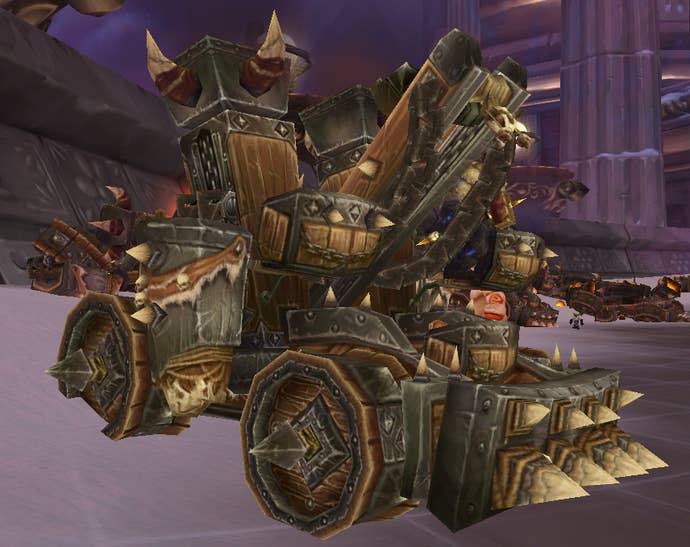
"One of the things I spent time trying to make work was exactly that in Battle for Undercity. A moment was quickly forgotten, but was fun experimentation for me at the time as a learning tool," says Hazzikostas, describing a Doomguard boss that would pick your fellow soldiers up, drain their life, and throw them away. It looked really cool to the player, but it was actually an implementation of the new vehicle system. "Technically, that soldier was a passenger in the Doomguard's hand for a couple of unfortunate seconds."
Pardo describes this general ethos in Blizzard for seeing where new technology can be repurposed as "ninja-ing things in." He admits the practice fell out of favor a bit before he left the company in 2014, but it's clearly apparent through many of the stories I was told. Many features and experiences players fondly remember were created by taping bits of the game together and hoping it would it fly.
Burning Crusade was successful, but Wrath of the Lich King utterly surpassed it. The game's storytelling improved and it helped to be finishing the story of Warcraft 3's most infamous character. Those who had enjoyed Warcraft 3 saw Arthas' fall from grace, with the culling of the plagued city of Stratholme, it was his first step to becoming the Lich King. Players could not only face Arthas in the Icecrown Citadel raid, but also see him making his presence felt during questing. As Pardo noted earlier, Wrath was the WoW team hitting its stride to the tune of 12 million subscribers. That was its all-time peak in terms of subscriber numbers.
So that means it's time to take it easy, right?

Cataclysm Pre-Release: 2009-2010
The World of Warcraft team had other plans. Instead of just adding another continent, the focus of the next expansion was on the original Azeroth. Flying mounts had been a wonderful feature since Burning Crusade, but you couldn't use them in Vanilla WoW because the terrain wasn't built to accommodate it. In addition, some of the old content was looking a bit rough; the team had grown in size, experience, and resources since WoW's 2004 launch.
So Blizzard decided to start small.
"We had felt like there was a constant player request: 'Can you guys just go fix Westfall? It just looks stupid.' The art doesn't match. There's some weird quests, some broken quests. It just didn't feel like the more epic storytelling moments we were able to do in Lich King. And so the idea was to go back and fix the old world," says Street about the early genesis of the idea.
According to Hazzikostas, the team began by looking at the entire map of Azeroth and color-coding each zone: Green, Yellow, or Red. Green zones didn't need much in the way of changes. Yellow zones were going to get tweaks in terrain, geometry, and quest lines. Finally, the Red zones were complete teardowns and redoes; everything was razed to the ground to build anew. Street notes that when the team began, it started on Silverpine Forest's level 10-20 area. After reworking that zone though, the team was so happy with it that the desire for fixes grew. Everyone wanted a chance to fix the game.
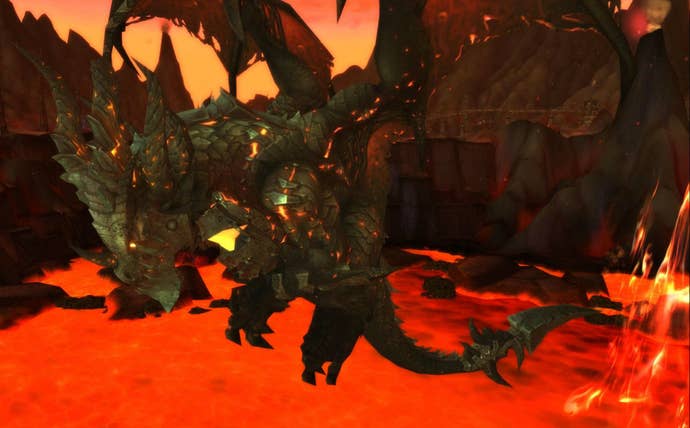
"There weren't that many reds on the map initially. The team is a group of perfectionists and so there was a lot of desire to make deeper cuts," says Hazzikostas. "There was, over time, effectively more and more zones moved into that 'total overhaul' category. And so what started out as a series of surgical projects ended up with probably redoing 70 percent of the world in a very fundamental way. And so that was redoing 60 levels worth of content, redoing 70 percent of the entire [outdoor environments] from 2004, while also making five brand-new zones for leveling players from 80 to 85, and the new dungeons, new raids, and everything else. That was a tremendous undertaking."
The art team was firmly on board, because it was a chance to make things look much better. Technology had improved and Blizzard's environment artists had years of building elaborate structures and zones like Tempest Keep, Icecrown Citadel, Crystalsong Forest, or Storm Peaks. Cataclysm was a way to bring that expertise to bear on past work, and the art team jumped at the chance.
"As we started to brainstorm ideas we got pretty excited because we were able to revisit a lot of these areas in a new way and still create new content out of it. That brought a lot of excitement to it. And as we started to jam more ideas, that kind of gained momentum," says principal artist Jimmy Lo. "It was also a cool opportunity for us to kind of go back in and add a lot more detailed fidelity to some of our art assets. I think with WoW it turned out as this kind of stylized, timeless art style where it aged very well. It never really got outdated."
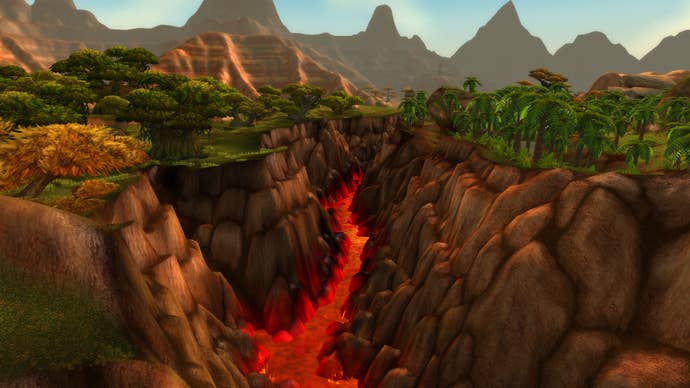
The Barrens were split in half, with the Horde and Alliance fighting over one half. Thousand Needles, formerly a desert area of jutting spires, became a vast lake with some islands. Hillsbrad Foothills, a constant war zone on PVP servers, actually fell completely under Horde control. The Dwarven starting area of Dun Morogh received a new city called Tinkertown for starting Gnome players, and the Trolls moved to the Echo Isles of the coast of Durotar. Blizzard cut, chopped, painted, and reimagined its old world.
There were some technical challenges with the Cataclysmic changes. The developers were drastically reshaping the world, but players were already living in it. If a player logged out on top of a mountain in Vanilla or Burning Crusade, they could log back in during Cataclysm to find themselves in a crater. Dawson addresses the team's fixes to this situation, noting that he left briefly to help the Overwatch team. Players who would be in dramatically different places just woke up in the game's capital cities, ready to explore this new world.
"We didn't have to try to translate you to the new terrain. Because if you logged out at the top of the Loch Modan dam what does that mean?" says Dawson. "There was a lot of stuff talked about internally like, 'Hey, maybe we should kill all the players,' but that doesn't seem like a very friendly thing to do either."
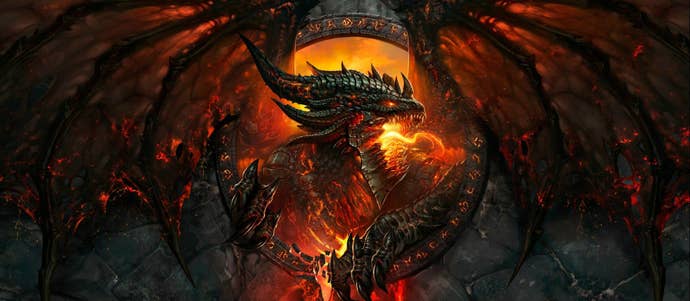
Cataclysm: December 7, 2010
And so, Deathwing awoke. The former Earth-Warder was one of the five Dragon Aspects, charged by the Titans with protecting Azeroth. He was given the task with protecting the firmament of Azeroth itself from outside threats, but ultimately found himself driven mad by the whispers of the Old Gods. Neltharion died and in his place was the armored tyrant Deathwing.
Deathwing's flight sundered the world, justifying the world changes that Blizzard's team had made. The goblins of the Bilgewater Cartel joined the Horde as a playable race, while the lost people of Gilneas returned as the werewolf-like Worgen. Questing from level 1-to-60 was an entirely new experience, while elder game players got to look forward to new zones added to the fringes of the existing continents of Kalimdor and Eastern Kingdoms. These zones included a redone Mount Hyjal and the underwater zone of Vashj'ir. One zone was Deathwing's home within the elemental plane, known as Deepholm.
"I definitely have a lot of fond memories of Deepholm. I worked on it. I was able to do some conceptual paintings for it and paint some textures. It was a very cool collaborative effort to create that whole look. You know, I still remember painting the textures for the gems. Other artists came in and they were looking at what I was doing. 'Oh that's cool. What if all the rocks were like floating?' That's a really cool process of everybody kind of riffing off each other in terms like ideas and building on top of it," says Lo.
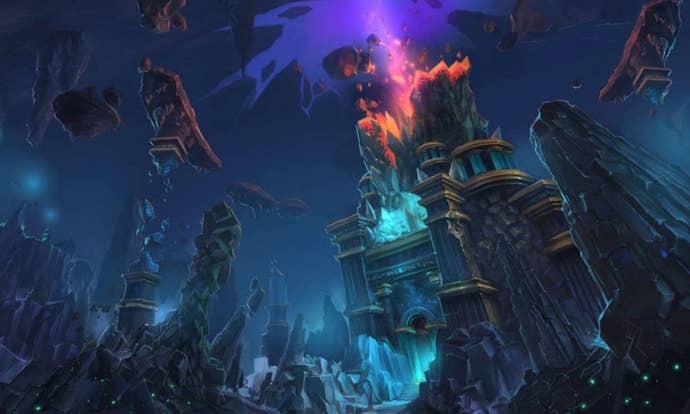


Cataclysm was mostly a winner, but there were some rough patches to the experience. The rework of the old world was grand to see, but the new zones were dotted about Azeroth. They felt connected to the world, but they really didn't feel connected to each other.
"I think you can see from then on, Blizzard always went with 'Let's Just Add a New Continent' rather than try to have random zones scattered around," says Street.
Dungeons also became hard again. World of Warcraft has always had an ebb and flow in terms of its dungeon content. Five-man dungeons in classic World of Warcraft were challenging and long. Burning Crusade dungeons were more compact experiences offering some challenges for players, but being rather doable with proper planning. Wrath of the Lich King's dungeons were markedly easier, shifting always from careful crowd control to a faster, more bombastic style of play. Tanks would grab a room of enemies and the DPS would use its best area-of-effect abilities. There were Heroic Dungeons, max-level versions with harder mechanics first introduced in Burning Crusade, but WoW's designers didn't really like the shift in play style. So Cataclysm shifted back to a harder style of play.
Players were not happy.
"Yeah, this is one of the most controversial parts I think in my tenure at Blizzard," says Street. "For someone who had kind of grown up on really difficult Burning Crusade dungeons, I'd kind of hated what they become at the end of Lich King. We knew that having new dungeons in Cataclysm where players were appropriately-geared would make them much more challenging. I also gave the team the direction: let's go back to 'finishing a dungeon is an accomplishment.'

"And I remember I was at a launch event in London and I announced, 'Hey we're making all these dungeons for Cataclysm and they're going to be hard.' And I remember some of the players in the audience booed and that was my first indication that, 'Wait, maybe this is not something players want. Maybe this is something I want.' The expansion launched and some of the dungeons were just brutal. Very, very difficult. If you used Dungeon Finder to find a group, your success rate was very small."
In hindsight, he believes the mistake wasn't in having difficult dungeon content. It was not having something for more casual dungeon runners and questing players, many of whom had joined the game during Wrath of the Lich King. Many solo quest chains had their endings in dungeons; if you were more of a story-focused player, a difficult dungeon experience could be intensely frustrating. What the game needed was dungeons for more casual players and more hardcore ones.
"We had built up this huge community of casual dungeon runners in Lich King and we gave them no alternative. They had nothing they could do in Cataclysm. They would get to max level and burn out of the game, because there's nothing for them to do," he admits.
Blizzard would ultimately come to terms with this in the form of Scenarios and Challenge Mode dungeons in Mists of Pandaria, Mythic dungeons in Warlords of Draenor, and Mythic+ in Legion. These features would offer something easier and harder, catered to players who liked that kind of content.

Not every promised addition was delivered. Members in the World of Warcraft community might remember when the Abyssal Maw was revealed at the Dungeons and Raids panel at BlizzCon 2010. It was meant to be the second leg of a storyline that began in the Throne of the Tides five-man dungeon in Vashj'ir, with a scheduled release in Patch 4.1. The team even put some work in on the dungeon itself, creating new technology for some of its effects.
"The Abyssal Maw was fun. I remember we were blue skying that one. There were a lot of high-concept ones, but that was cool because we actually ended up working with engineering. We wanted this kind of underwater feel and this idea of water being parted where you see a wall of water that was held back by magic. We did a conceptual piece and have a cool engineering department; they're oftentimes inspired by art. So they ended up developing this cool new water shader that we utilize and now have within our tools moving forward," remembers Lo.
Ultimately, the dungeon was cancelled though. According to former Blizzard designer Greg Street, the team just didn't have time to keep working on the dungeon and ship it out without something else suffering.
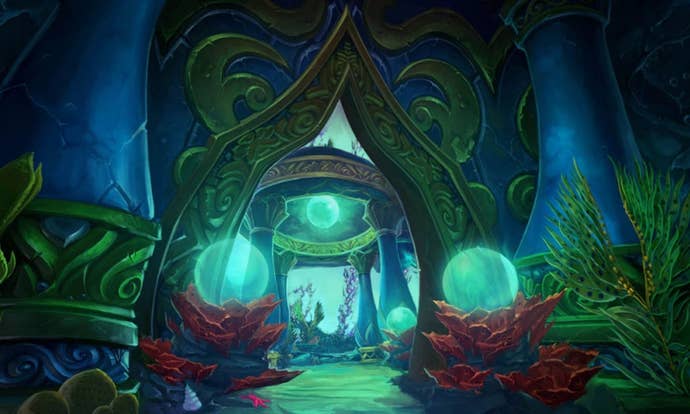
"As we started to run out of time, we had done some work on Firelands, but the Abyssal Maw was mostly going to be a reskin using one of those giant sea urchin dungeons with the Old God-ish monsters we'd used before. We were really worried it was going to disappoint players," says Street. "We'd done something similar back in Lich King, when there originally was this plan for this epic Azjol-Nerub, Underdark spidery-themed raid that we just cut for lack of time because we needed to get Icecrown and then we needed to get to the next expansion."
He acknowledges that players were unhappy with the cancellation, but he chalks that up to heady expectations of what the Abyssal Maw would've been. Street believes it would've turned out closer to the Ruby Sanctum in Wrath of the Lich King; a quick experience with reused content.
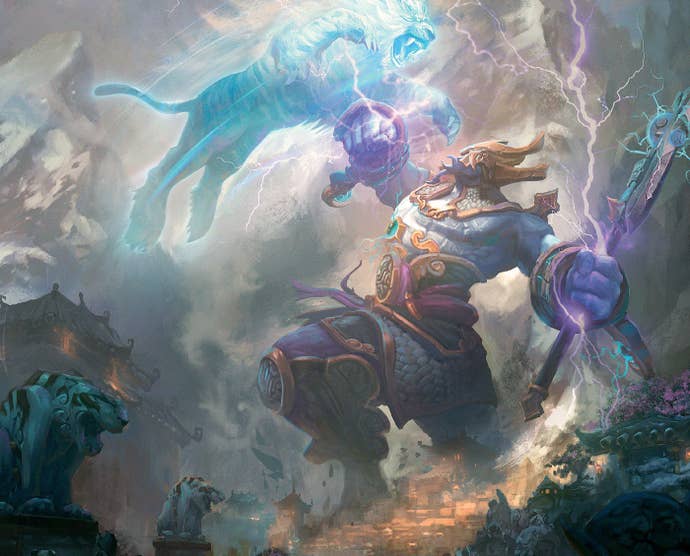
Mists of Pandaria Pre-Release: 2011-2012
After several fairly dark and heavy expansions, putting players up against Illidan, Arthas, and Deathwing, Blizzard wanted to try something more lighthearted. Back in Warcraft 3, the studio introduced the Pandaren, a panda-like race that was more of a joke than anything else. The race offered a new opportunity though, a chance to explore a different look and aesthetic than players had become used to.
"It was meant to be an initially somewhat more lighthearted, serene expansion. Getting back to a vibe of exploration and adventure after a series of world-ending threats," Hazzikostas tells me. "We knew the Pandaren were an iconic Warcraft race that existed in Warcraft 3. We had been looking for an opportunity to fit them into the game at some point and so decided to kind of double down."

"We had explored using them once earlier on as an expansion race, I think back in Burning Crusade," says Street in reference to the Pandaren.
Once again, Blizzard's art team had a chance to really cut loose and try out new ideas. Pandaria was a whole new continent featuring clear influences from Chinese art, architecture, mythology, and pop culture. It was very easy for the team to begin making concept art and prototypes.
"Sometimes with certain themes it can be a challenge to get everybody on board in terms of, 'Hey, what is this about?' With Mists, it was really cool because from the get-go we knew, 'Oh okay, it's heavily-based on Asia,'" says Lo. "Chinese landscapes, culture, and the pandas. At the very beginning everybody knew what it was about. There was not as much time trying to figure that out and now we could spend all that time figuring out what kind of cool stuff can we do now."

The style and overall tone of the early expansion also led to a lot of freedom on the part of the art team.
"I remember working on the [Stormstout Brewery]. What if the whole dungeon was a brewery? We were having a lot of fun just exploring that and jamming with people. You had that freedom. Not everything has to be super dramatic or serious. So that was a cool, different shift for the expansion," Lo says.
Blizzard also dramatically changed the Talents system. Before Mists of Pandaria, players had to put points into various talent trees. The one you put the most points into determined your specialization. World of Warcraft had carried that system forward throughout the years, but there was a problem: With each expansion, the talent trees were just getting longer. Blizzard could trim the trees, but that would just punt the problem down the line.

"It was something [former game director] Tom Chilton had been leaning on for a while. He was worried that the system we'd made was not scalable, and I think he was right. I want to give him credit for kind of identifying that that was something we needed to change. He and I kind of worked on the side project to see if we could build [a new talent system] for a class, because we were worried it'd be so controversial," says Street.
Instead, the player chooses their specialization first. Every certain number of levels, the player has the choice between one of three talents; the talent line tends to have a flavor, but each talent has a different focus. It's a streamlined system that was supposed to prize real player choice, as opposed to some of the false choices the old trees offered. You could put talent points into anything, but in practice, players would crunch the numbers and go with a build specifically tailored and maximized depending on what they wanted to do. The complexity looked like choice, but it really wasn't, according to Street.
"There's player value in complexity. You're making more choices. You have more room for specialization. That's a fantasy. I think we never really delivered on it and most games try to offer things like that never really deliver on them, because it's so hard to get right," he says. "I think when players said they liked the complexity, what they were saying is they wish we had had something that offered the choice intensity of the Pandaria talents with the sheer number of choices they were making in the older talent trees. I just realistically don't think that was something we could develop a balance for."
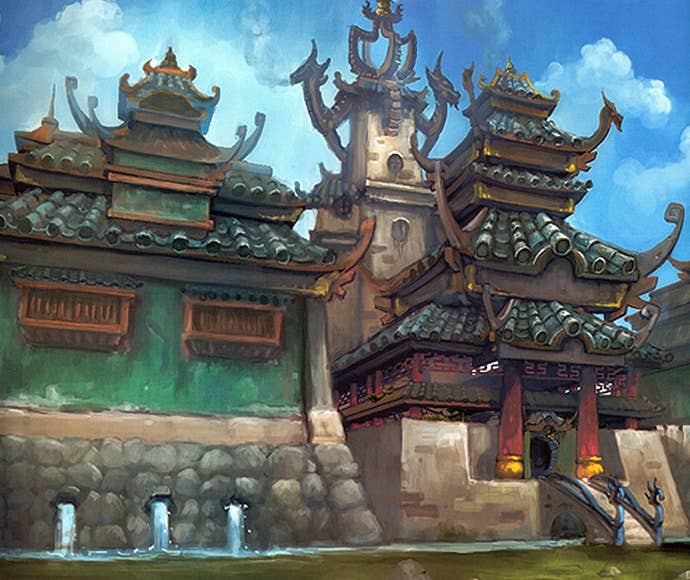
Mists of Pandaria represented a strong effort by Blizzard to knock down some of the walls built into the game. It offered more choices and more things to do. Dungeon Challenge Modes allowed players to run difficult dungeons for timed rewards. The Pet Battle system was added, turning all of those collectible pets into a Pokemon-style fighting system. Collections allowed players to manage their pets, mounts, and eventually their Transmog appearances in a single UI window.
Transmogrification was a feature added in Cataclysm, very beloved in certain parts of the community. Players could now make their current armor look like any of the other armor they had obtained. The problem was you had to keep all the gear in your inventory. With the switch to Collections, Blizzard wanted to do away with the need to keep all that Transmog gear. The new system simply unlocked the appearance in Collections once you obtained the item. Blizzard also wanted to retroactively give you all the appearances you had previously earned; the game knew which quests you had completed, it was just a matter of giving you those rewards as appearances.
"We had a lot of fear about the day one login experience when hundreds of thousands of people would log in and try to say, 'Hey, here's 5,000 things that I actually already know. Go ahead and put that in your database. Thanks,'" explains Patrick Dawson. "What we actually did was put in a throttle. We said, 'Here's a bunch of stuff we already know.' Does it matter that it's all there at the very first second you login? No. Does it matter that it's there within five minutes? Probably. So over the course of a few minutes we'll actually upload your items to the transmog database,"
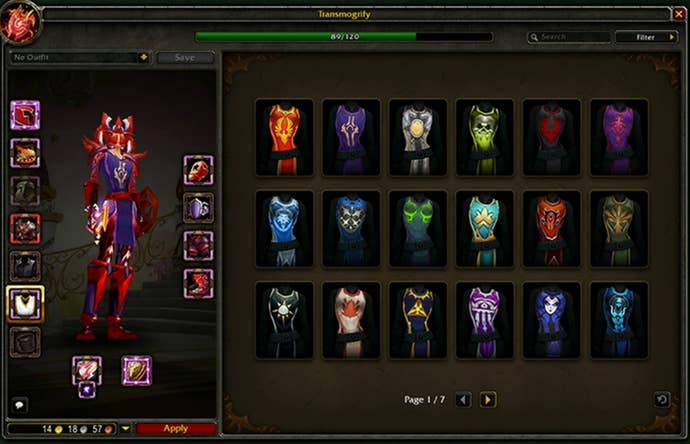
"It was just stuff that we knew about because on some players, it was upwards of 10,000 items. I think they used my character as a litmus test. I am a hardcore raider and a collector. I think according to WoW Progress my Battle Pet collection is top five in the world. So yeah, it's pretty crazy."
Dawson was also a part of "the second biggest re-architecture of World of Warcraft that we've ever done," in order to enable cross-realm zones. This new feature would seamlessly bring players questing in certain zones across different realms together. It allowed Blizzard to solve the problem of low population servers, you could just make sure they're in a cross-realm group with a high population server and those players will never be alone.
"It was very challenging to do that because we've created this seamless world where now we need to break that up a bit more. Like Elwynn Forest is different than Westfall. We didn't really have that before. What we actually had was more of a grid-like architecture, where we would split up the load based on where you were out of the grid. Everything was unified, so it wasn't about Elwynn versus Westfall. It was about, are you going to cross this boundary? Now the boundaries are zone-based. And as a result, when you cross the boundary you might be moving to another piece of hardware."
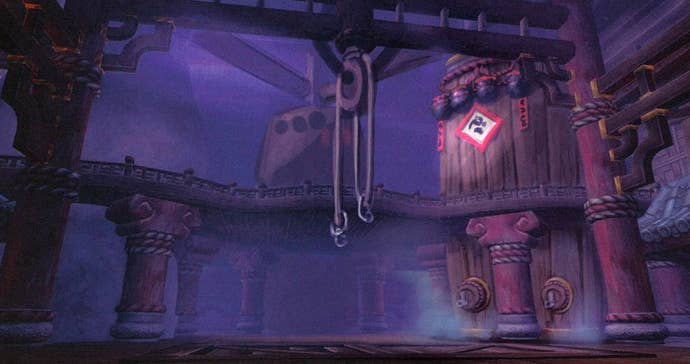
Dawson says the system faked the seamless nature by logging the player in and out when they crossed a zone boundary. Some players noticed some small hiccups back when cross-realm zones were introduced, and this was because of this logging process. The system no longer works that way, but at the time, it was the best Blizzard could do.
Cataclysm changed the world, but Mists of Pandaria offered a number of system changes to the game itself. For veteran fans of the game, the departure from their expectations proved a bit too much.
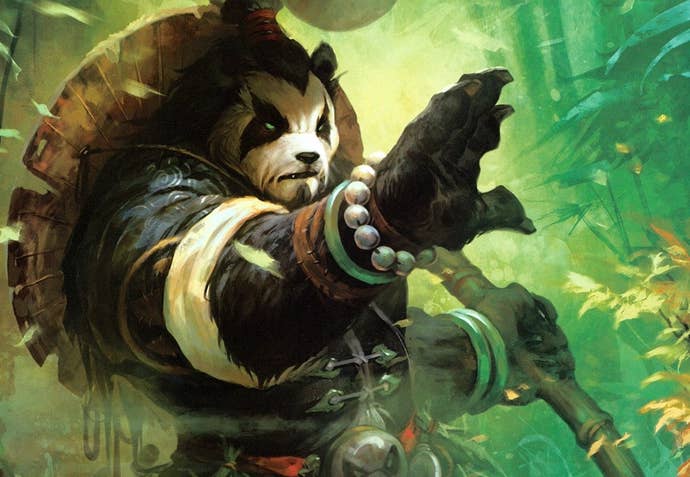
Mists of Pandaria: September 25, 2012
While players had liked the Pandaren as a small character in Warcraft 3, they did not like an entire Pandaren-themed expansion. Mists of Pandaria introduced the Pandaren as a new race for the Horde or the Alliance and the new martial arts-themed Monk class. It was a new flavor for World of Warcraft players and they simply didn't want it.
"It was honestly challenging," said Hazzikostas about the expansion's reception in the community. "The team felt like we'd made something great. And I think in retrospect players agree, but there was definitely-understandably-this initial dissonance. Like, 'Wait, pandas? That's just like kiddie stuff. I don't get it.' In terms of lessons learned, it's tricky because I think we made a great expansion overall. What do players expect to see from any Warcraft expansion and how can we make sure that what we're presenting really matches those expectations."
"The mistake we made was we imagined that all WoW players loved the idea of a Pandaren, which had been originally kind of designed as a joke," Street adds. "I think in retrospect if we had just made an Asian-inspired continent and had the Pandaren race, but not made them the focal point? Not named the expansion after it, not put a Pandaren Monk on the box, we probably wouldn't have gotten that response. People saw the Pandaren and I think that was when they're like, 'Wow, they're forsaking their roots.'"
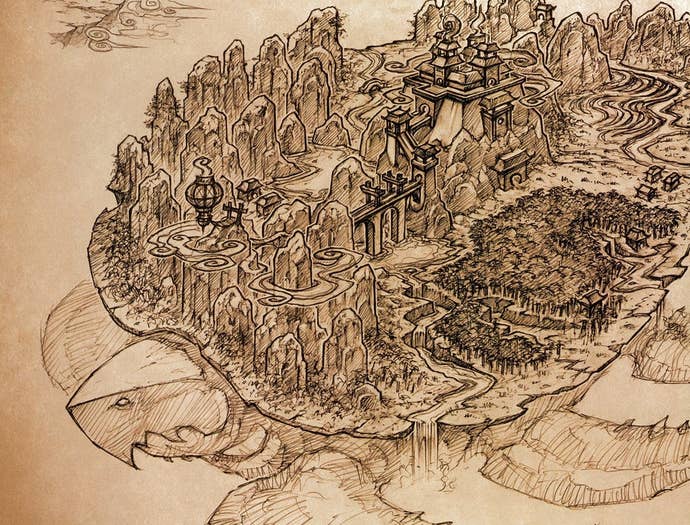
Mists of Pandaria did push forward the game with even more unique content. The expansion introduced Scenarios, dungeon-like encounters that used assets and enemies from outdoor areas. Scenarios were built to be completed by one-to-three players, but with no composition limits. Anybody could join a Scenario and have a good experience, regardless of what spec they were.
"A big key around them is to be easy to develop and easy for players to run. The mandate was something like one developer, one designer can make on their own. We should be able to reuse existing chunks of the world, but we can do things players wouldn't normally be able to see. We could do much more focused storytelling. And then on the player side of things, we wanted something lighter weight than a dungeon rather than a commitment of 30 or 40 minutes with trying to find a healer that can actually keep up," says Street, outlining the aims of the new mode.
"It was also the beginning of experimenting with a different type of storytelling and gameplay," adds Hazzikostas. "Dungeons are much more traditionally hallway-room-hallway-room. You're working your way through to confront the final boss. Scenarios often felt like part-dungeon, but also more of a directed form of outdoor gameplay."
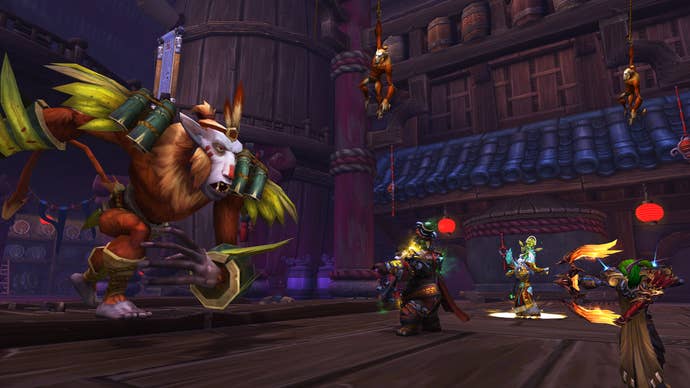
Hazzikostas is quick to note that Mists of Pandaria wasn't World of Warcraft becoming easier. In fact, he points to the difficult Mythic+ runs of dungeons even today. World of Warcraft is still hardcore today, but that's not all it is. It offers solo content, dungeons and Scenarios to run with your friends, pet battles, Professions, the Auction House, and high-end raiding. With World of Warcraft today, Blizzard is trying to offer something for everyone.
With time and distance, many players see Mists of Pandaria as one of the better World of Warcraft expansions. There were a host of smart system changes like cross-realm zones and Collections, some excellent dungeons and raids, and some of the best-looking zones in all of WoW history, like Valley of the Four Winds, Jade Forest, or the Vale of Eternal Blossoms. Despite a rough initial response, the community came around on the expansion eventually.
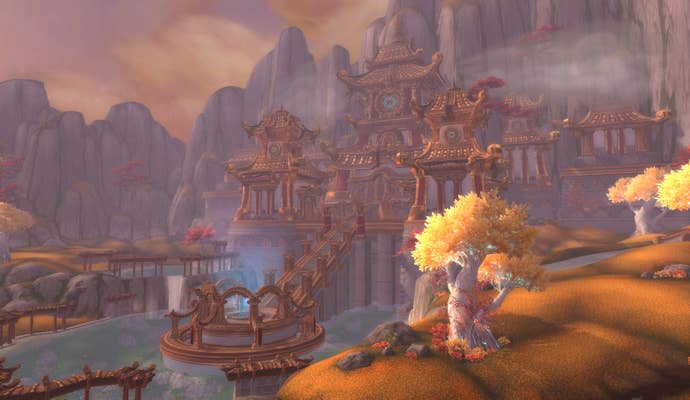
Mists of Pandaria marked the last expansion shipped by lead systems designer Greg Street. He would leave in November 27, 2013, almost a full year prior to the launch of the next expansion, becoming lead game designer at League of Legends developer Riot Games. Street is surprisingly candid about his reason for leaving Blizzard, though he still loves the company and thinks fondly of his time there.
"They're some of my closest friends and I love the team. It was a decision that took months to make. At the time, kind of the direction was, 'We're really worried about returning players and the more class changes we make the harder it's going to be for returning players to be able to jump back in.' Looking at this wish list we had, like the Priest Chakra ability was kind of lame and we had big plans to fix it," he says.
"All of a sudden, Nope, Chakra has to stay. Everything has to stay. We're going to make super-minimal class changes. And even if that was the right thing for the game—you can argue maybe it was or maybe it wasn't—as a developer that just didn't interest me," Street adds. "Ultimately I started talking to Riot. It was a company that really emphasized talking to players. I was always swimming upstream, whereas at Riot that was something they loved. So it just felt like a natural fit for me."
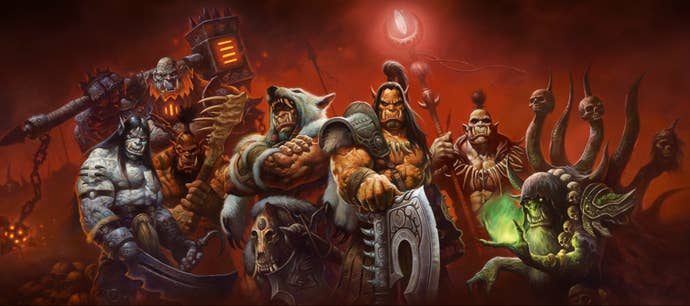
Warlords of Draenor: November 13, 2014
Part of the storyline of Mists of Pandaria was the fall of the former Horde Warchief Garrosh Hellscream. You take on Garrosh in the final raid of Mists, but he escapes. Together with series mainstay Gul'dan, Garrosh convinces an alternate reality version of Draenor's Orc clans to rise up and form an army: the Iron Horde. If Mists of Pandaria was a lighter Chinese opera, Warlords of Draenor was literally death metal.
"With Warlords, it was a more serious darker tone. A lot of people were excited about that because it was an opportunity for us to kind of go back to the old school roots of Warcraft," says Jimmy Lo about the return to WoW's visual staples. "I was actually like really geeking over that. Going back to the foundations of World of Warcraft, but at the same time having the opportunity to actually like take some of these characters and update them."
As part of the Warlords of Draenor launch, Blizzard also went back and updated the character models for most of the launch races. The aim was to keep the same basic look, but add more fidelity, facial animation, and overall character animation. Most characters didn't even have fingers in their original models, just giant fleshy nobs that held weapons. This desire to update models is something that carries forward into the game; every expansion has a series of updates to old Vanilla and Burning Crusade models. It's about keeping the game up-to-date.
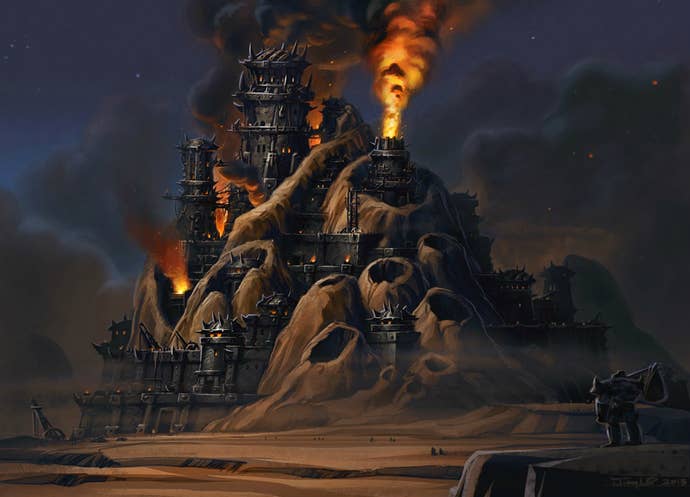
"There's a lot of work that goes into World of Warcraft in terms of the evolution of our style. Some of it's more obvious, [high-resolution] textures and things like that," says Lo. "We've added like new rigs to the faces to get more facial animations, more expression within the characters. More recently with our armor sets, component geometry, we actually added separate geo pieces within the armor. We're always kind of evolving just the look of the game in that respect."
The primary feature of Warlords though, the one that carried through everything, was the Garrison. Warlords saw a shift in the storytelling of World of Warcraft. Previously, the player was another soldier on the battlefield, running behind the major characters in WoW's lore. But by Warlords, you had killed series bosses like Ragnaros, Arthas, Deathwing, and more. You were the one that had saved countless lives across all of Azeroth and Outland.
So characters in the game started treating you like it. In Warlords, you were the Commander, the hero of countless battles, the one trusted by the leaders of the Alliance or the Horde. Named characters in the lore turn to you for counsel and support. You're the hero.
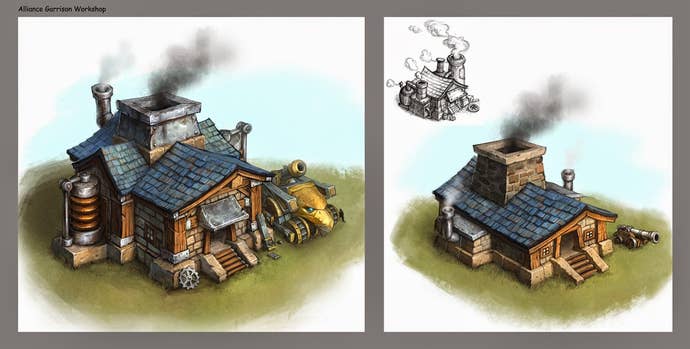
The Garrison system put you front-and-center, as the Commander establishing not only your own town, but also various outposts on Draenor. "I'd say that was definitely the other largest undertaking in World of Warcraft's history in terms of art and engineering efforts coming together to create this entirely new type of gameplay," says Hazzikostas. "We wanted to have a new way to interact with the world that reinforced the story we were telling. You needed to actually raise an army. What does that mean in Warcraft? Well it means building a base, barracks, armory, lumber mill, and all of those things because those are some of the RTS origins of the franchise."
The Garrison itself was an instanced city for the player. Only you could see your Garrison and inside of it, all of your citizens and soldiers would acknowledge your presence.
"That was the first time we've had to put a player in their own instance and did this across the population of World of Warcraft," says Patrick Dawson. "So Garrisons actually exists as an instance, much like Deadmines or Molten Core would have. Except instead of having 30 or 40 people in it, you would have one. An instance is expensive; it's not cheap, it's very costly to spin up an instance. So when you spin one up for each player, World of Warcraft can get a little expensive. So we had to do really clever things with memory sharing. So what we do actually a start of a process and then have a thread for each garrison for it."
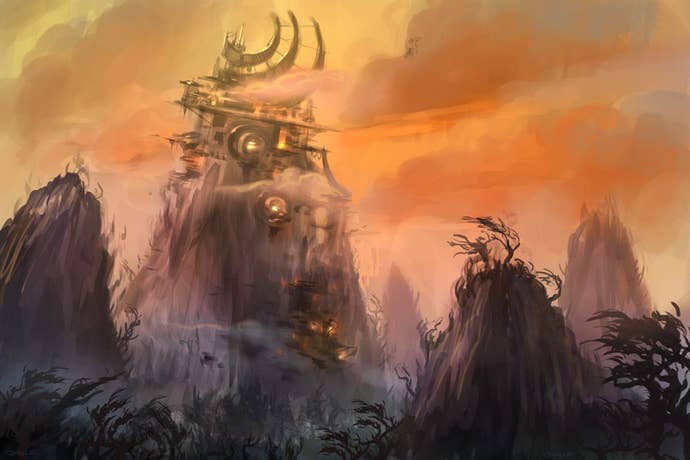
In the end though, Warlords of Draenor was the anti-Mists of Pandaria. Fans were high on the expansion when it was first announced—servers couldn't keep up—but as they continued to play it, reception soured. Warlords had only three raids for its entire running time: Highmaul, Blackrock Foundry, and Hellfire Citadel. That's down from the five raids in Mists, the six each in Cataclysm and Wrath of the Lich King. It was an anemic two years in terms of playable content for the game. Warlords had the fewest content patches of any expansion and fans felt the pain. "Mistakes were made," as Hazzikostas noted in an interview with Destructoid around Legion's launch.
"We all play the game, so any time our fans perceive something, it's likely that we perceive it as well. Our support of [Warlords of Draenor], in terms of stuff that there is to do and patch cycles and all that-we didn't do enough," said lead game designer Luis Barriga in an interview with PCGamesN around the same time.
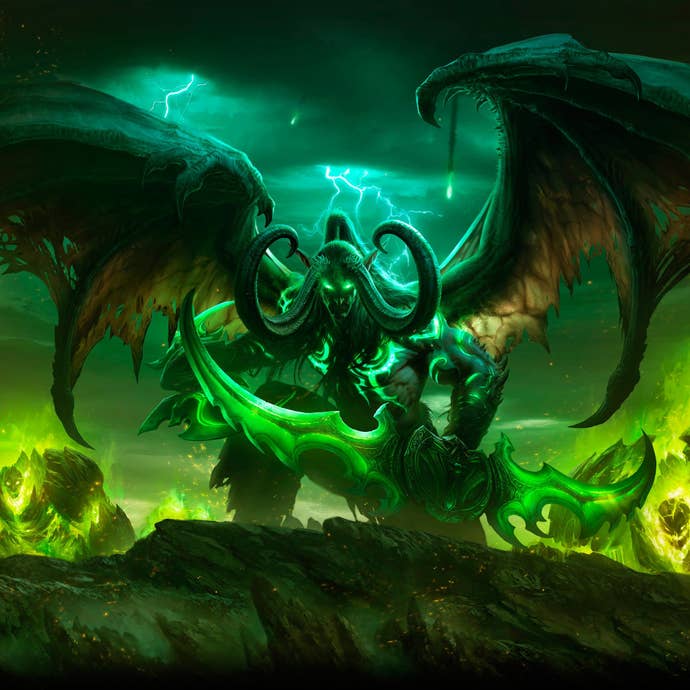
Legion: August 30, 2016
With the marketing misstep of Mists of Pandaria and Warlords of Draenor's low content, World of Warcraft: Legion was a strong return to form. The expansion added the new Hero class, Demon Hunters, who followed the teachings of a revived Illidan. Mythic+ joined as a new dungeon mode, a refinement of the Challenge modes for Mists dungeons. The Garrison was replaced with the class-specific Order Hall, bringing each player to the forefront of their class in the world of Azeroth and offering a specialization-specific Artifact Weapon. Artifact Weapons replaced the basic and Legendary weapons players had equipped before you weapons drawn directly for World of Warcraft's lore, like Thrall's Doomhammer or the Ashbringer. Not only were Artifact Weapons a great fulfillment of the class fantasy, it was also a nice progression system overall.
Legion also features the absolutely massive city of Suramar, which at the time was probably the largest city the developer had ever put together. The home of the new Nightborne faction was a sight to behold. It was a monument to Elven architecture and a hub for the game's new World Quests. Players would return there again and again to complete their Good Suramaritan achievement.
"The Nightborne was cool because it was an opportunity for us to expand on Elven architecture in general. Put that on steroids," says Lo. "It was a way to really extend their culture a little bit more. We try to pull our inspirations from old lore stuff, things that we've done before. While it's fun to create like new stuff, it's also cool to revisit some of the older things and then kind of do a fresh take on it because players dig that stuff."
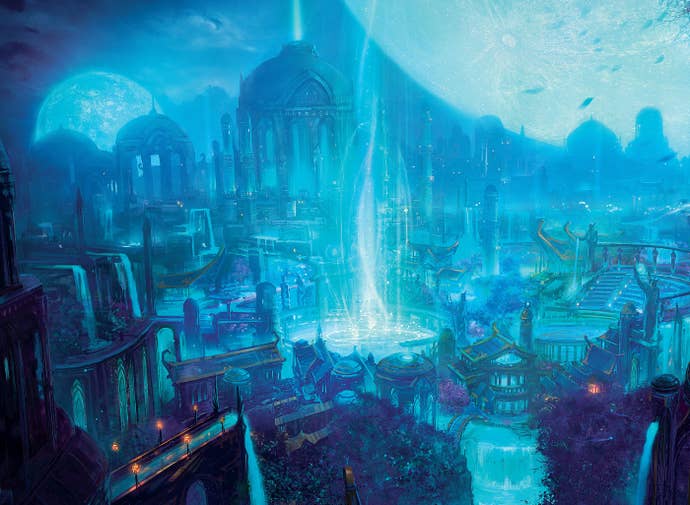
Prior to Legion's launch, Blizzard offered the Legion invasions, with random attacks coming from the sky to attack areas around Azeroth. Fans loved the invasions because they were these cool, huge battles, but they were also a great way to level up. According to technical director Patrick Dawson, those pre-Legion invasions were actually testing server technology. The invasions were a result of dynamic sharding technology, which would split a server into different server-like instances as needed.

"Our population [in Warlords] had gotten so massive that we couldn't feasibly put all the players from a realm onto a server and have it function. So whereas cross-realm zones combined people from two servers in the one, Warlords of Draenor required us to take people from one server and put on two," says Dawson. "Say we want about a hundred people in this area. Once you have a hundred people, start up a new [instance]. Then [the next hundred people] join a brand new, freshly-started [instance] and are able to play through the experience. That felt really good, especially as a player."
Legion hit the ground running and didn't stop. It was Blizzard's attempt to right the ship and fans were not only enjoying the game, but the WoW team's commitment to making sure there was new content on a regular basis.
"Looking back at Warlords or looking back at Mists, there were very long gaps between patches or content updates within an expansion," says Hazzikostas. "That was the main thing that I set out and prioritized fixing for Legion. I think I'm very, very proud of what the team was able to accomplish, delivering a series of patches and content updates just a couple months apart in a pretty regular cadence throughout 2017 into the beginning of this year. Having the shortest gap between the final raid and the next expansion that we've basically had in my memory."
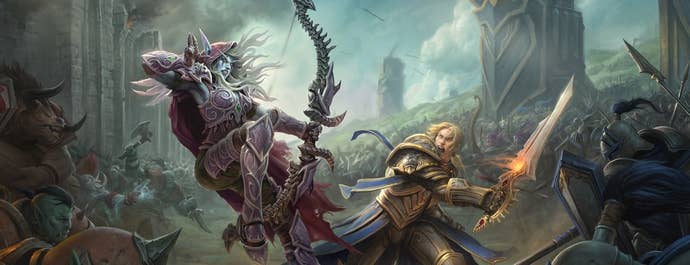
Battle For Azeroth: August 14, 2018
Last week, Blizzard closed out the Legion chapter of World of Warcraft and entered another one with the launch of World of Warcraft: Battle for Azeroth. It's already had the best launch day sales of any World of Warcraft expansion, with 3.4 million copies sold in 24 hours. It's here and fans are already playing it, enjoying and hating it in equal measure. As the expansion's title suggests, it pushes the focus squarely back on the war between the Horde and the Alliance.
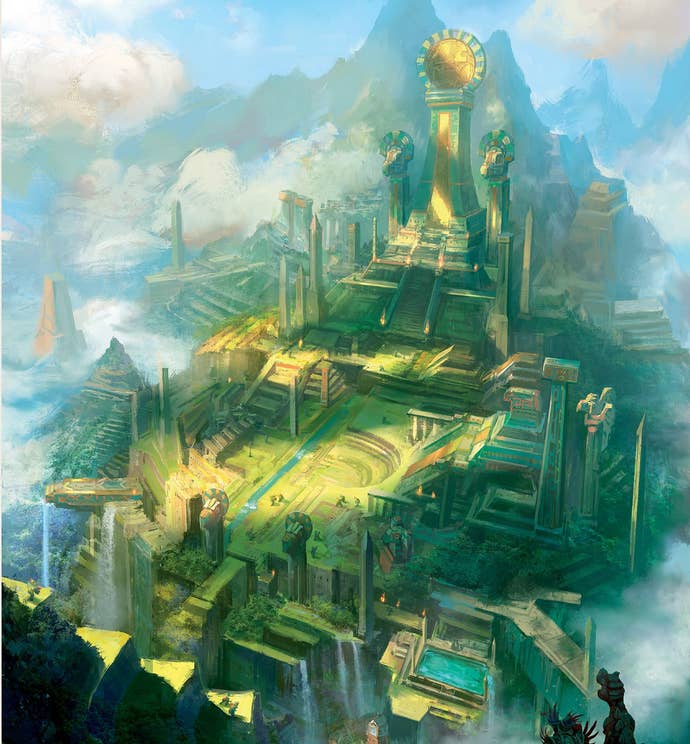
"We consider the faction divide foundational to Warcraft since [its real-time strategy] times. We've danced around it for so many expansions now that we feel like it's time to pay it off," Battle for Azeroth creative director Alex Afrasiabi said in an interview with Forbes. "I mean, there's so many different racial divides that have melted away into the background, but they're still there. For those races, those things are still there. These are the things we want to settle, and that's what I think this expansion is about."
Following recent events in World of Warcraft lore like the Burning of Teldrassil and the Siege of Lordaeron, Battle for Azeroth separates the Alliance and Horde into their own continents. The new regions of Zandalar and Kul Tiras feature lost civilizations that can provide more power to either army. Both sides are licking their wounds and looking for new allies in their reignited conflict. These Allied Races are offshoots of familiar WoW races: the Highmountain Tauren, Lightforged Draenei, Nightborne Elves, Void Elves, Dark Iron Dwarves, and Mag'Har Orcs. The war in 'Warcraft' is back and the number of participants is growing.
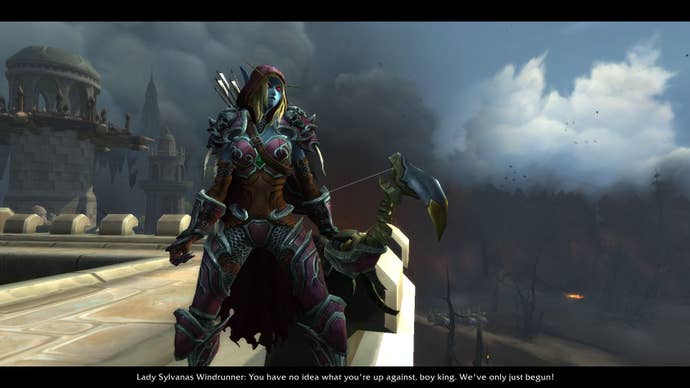
At the same time, Blizzard is using the expansion to really explore what the Horde and Alliance even stand for. Players have always leaned on their factional biases, but the story leading up to Battle for Azeroth tested the loyalty of Horde players. The current leader of the Horde, Sylvanas Windrunner, has made choices that don't sit right with players, leading to some anger and soul-searching.
"Those factions are so tied into player identity, when you see those banners, you know what they stand for-they're personal to you as a player. You did things for that faction, you fought that enemy, you held the line for them, defended your capital. That wouldn't be something we would take away lightly. That's part of the Warcraft DNA," said senior narrative designer Steve Danuser in an interview with Polygon. "What I would say is that there is definitely room for what those factions represent to evolve and change and for their relationship to change."
And as the factions continue to evolve, so does World of Warcraft. I don't want to spoil you, but there will be another WoW expansion in the future. (Probably in 2020.) And World of Warcraft will shift and change as the developers tweak this or remove that. In the end, it'll still be World of Warcraft though, because the ethos that kicked off the game's development in the first place is still apparent in the team today. It's not just about providing a grand world where the player is a god-killing, world-saving hero; it's about doing so in an experience that allows everyone to play.


